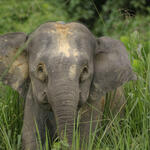Learn more about our impact
Learn more about our impact
- What we care about
- People
- Places
- Species
- Climate crisis
- Sustainability
- How we work
- Public policy
- Science
- Business
- Wildlife conservation
About WWF
WWF works to sustain the natural world for the benefit of people and wildlife, collaborating with partners from local to global levels in nearly 100 countries.


 Sumatran Orangutan
Sumatran Orangutan
 Sumatran Rhino
Sumatran Rhino
 Bornean Orangutan
Bornean Orangutan
 Rhino
Rhino
 Bornean Elephant
Bornean Elephant
 Sumatran Elephant
Sumatran Elephant








 Kerry Cesareo
Senior Vice President, Forests
Kerry Cesareo
Senior Vice President, Forests
 Linda K. Walker
Senior Director, Corporate Engagement, Forests
Linda K. Walker
Senior Director, Corporate Engagement, Forests